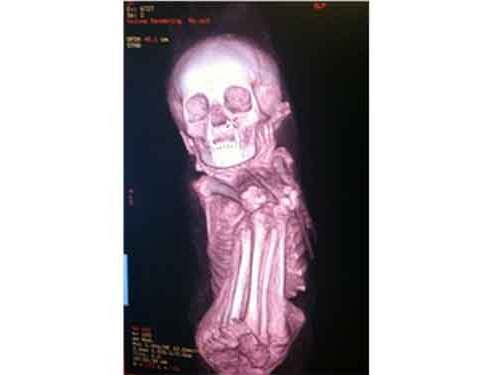Computed Tomography (CT)
High-tech CT scans in San Diego

High-tech CT scans in San Diego
Computed tomography, also known as a CT or CAT scan, is a painless, noninvasive way to see inside the body using X-ray imaging. During a CT scan, multiple images are taken from different angles. A computer combines the images to create digital cross-sectional images, or slices, of soft tissue, organs, blood vessels and bone. The slices can often be combined to create 3-D pictures.
Computed tomography is often used to help identify and diagnose such conditions as cancer, infections, trauma and cardiovascular disease. A CT scan can be performed even if you have a pacemaker or implantable cardioverter-defibrillator.
Common types of CT scans
Many Scripps facilities offer 64-slice computed tomographic scans. Some locations use low-dose CT scans — which result in lower doses of radiation exposure. We also offer a PET/CT hybrid scanner with faster scanning times and reduced radiation exposure. However, all CT scans result in exposure to radiation, so it’s important to let your care team know if you are pregnant to avoid potential risk to a developing child.
CT imaging provides a unique demonstration of soft tissue, bone and blood vessels. It is one of the best tools for studying the lungs and abdomen, and for quickly assessing injuries in trauma patients. It is also used in cancer diagnosis, in particular lung, liver and pancreatic cancers. CT scans are also often used to diagnose acute stroke, cardiovascular diseases, kidney stones and appendicitis.
At Scripps, we offer a variety of diagnostic CAT scan procedures, including:
- High-resolution chest CT to detect abnormalities or tumors of the lungs, heart, ribs and spine
- Abdominal CT to scan the organs in the belly and look for tumors, infections, kidney stones or appendicitis
- Cranial CT to look at the skull, brain and eye sockets for signs of stroke, trauma or tumors
- Pelvic CT to examine organs in the pelvis, including bones, bladder, uterus and prostate
- Spine CT to look for trauma or other problems of the cervical, thoracic and lumbar sections of the spine
CT angiography (CTA)
Computed tomography can be used to examine the blood vessels around the heart through CT angiography. In traditional angiography, a catheter is threaded through the body to the area being studied. This catheter is used to inject a dye that highlights the blood vessels and makes them easier to see on the scanned images.
When a CT angiography (CTA) is performed, the dye is placed intravenously (IV). The contrast dye is then used by the CT scanner to create the images of blood vessels. Because there is no need to thread a catheter through the body, a CTA is less time consuming and causes less discomfort than traditional angiography.
CT angiogram scanning is painless and noninvasive. The scan usually takes between 10 to 25 minutes. You may be asked to arrive at your appointment up to 90 minutes early to prepare for your scan, especially if contrast dye is going to be administered.
CT scan locations
Scripps Health offers computed tomography at several locations in San Diego County. Find a CT scan location near you.
